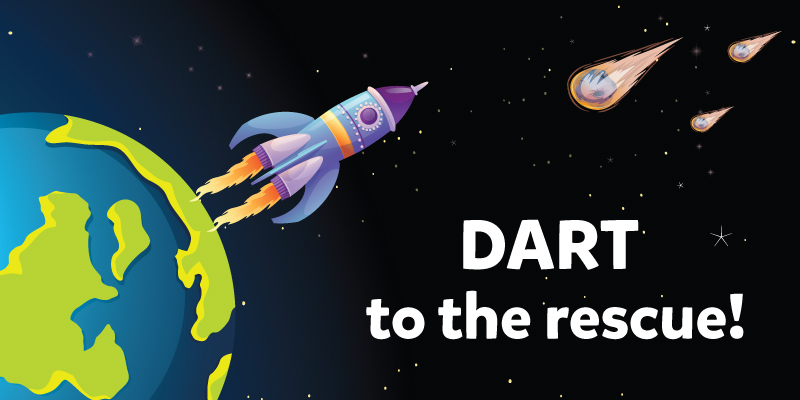
Those who have studied evolution would know the impact of an asteroid striking the earth’s surface. It is widely accepted that they wiped out dinosaurs from the face of our planet!
You may have also learnt that there may be other asteroids or near-earth objects that could collide with the Earth, with potential to cause destruction of the same scale.
That’s not something we need, right? So, NASA has recently launched a mission to save the Earth from any future threats from giant space rocks! If this sounds uncannily similar to the plot of the movie Armageddon, strangely enough, it is!
The space organisation has sent out a spacecraft to deliberately smash onto an asteroid, to probably change its course as a test run. For the Marvel fans among you, think of the spacecraft as Thor’s Hammer Mjollnir, but it changes the course of asteroids instead of destroying the heads of giants.
Let’s understand more about this spacecraft.
Scientists estimate that asteroids of size 140 metres or above strike once every 20,000 years. And some of them are quite near the earth.
There are 10,000 known near-Earth asteroids, but none has a significant chance of striking in the next 100 years. So, we seem to be safe for now. However, scientists think there are still 15,000 more such objects waiting to be discovered.

When some asteroids strike the earth, the damage is really severe
To be clear, not all asteroids pose a threat to the planet. But some of the larger ones do. Experts say that asteroids of size 100 metres and greater are a threat to the Earth, and we need to deflect their path based on their size and nearness to the Earth.
According to NASA’s Planetary Defense Coordination Office, those asteroids larger than 140 metres (460 feet) in size have the potential to level entire cities! They belong to a class of bodies known as Near-Earth Objects (NEOs), which approach within 48 million kilometres (30 million miles).
Experts at NASA thought that we need a spacecraft that smashes onto these asteroids and possibly change their course. They launched a spacecraft called DART – Double Asteroid Redirection Test – as a proof-of-concept experiment on November 23. It was launched onboard a SpaceX rocket from Vandenberg Space Force Base in California.
The goal of this spacecraft is to slightly alter the trajectory of Dimorphos, a “moonlet” about 160 metres (525 feet) wide that circles a much larger asteroid called Didymos, which is 762 metres (2,500 feet) in diameter. This binary asteroid system orbits the sun together.
This binary asteroid system is just a testing ground for the concept that NASA has come up with.

This spacecraft will observe and try and smash on the asteroid
DART would be the size of a golf cart and will likely strike the moonlet in September 2022, ten months after leaving the Earth’s orbit. The binary asteroid system is 11 million kilometres (6.8 million miles) from Earth – almost the nearest point they ever get.
There will be a camera and imaging system setup on DART to monitor the crash and its after-effects.The mission is using Italy’s LICIACube satellite to capture them.
DART is the latest of several NASA missions of recent years to explore and interact with asteroids – primordial rocky remnants from the solar system’s formation 4.6 billion years ago.
The entire operation of launching DART into space costs $324 million. NASA needs to ensure that it’s effective, right? Now considering the size alone, it’s like chucking a grapefruit into a huge rock. A look at this picture will help you understand how small the spacecraft is compared to the asteroid in question.

This is how DART compares with the mighty Didymos
But scientists believe that this will deflect the path of the asteroid. The magnitude of the deflection, however, remains to be seen. And the imaging systems will keep tracking the same as the spacecraft gets closer to the Didymos-Dimorphous pair.
You can wait and watch this space to understand how effective the DART mission is.
Also read about the NASA trip for students from India.
Aparna is a mom, singer and dreamer. At BYJU'S, she writes stories about learning for children. She believes in the power of music, especially ghazal, the magic of the universe and happy learners. When not writing or singing, you will find her intensely engaged in conversations about life and the power of words.